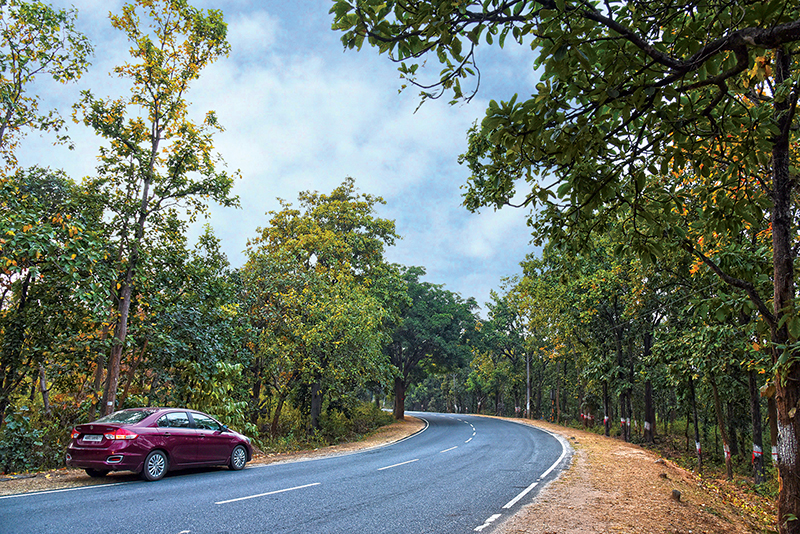
The picturesque stretch of NH-100 between Bagodar and Hazaribagh
The prodigal Kolkatan, forever seeking, yearns for that elusive perfect travel destination to direct their world-weary steps to. Hazaribagh, once a popular family holiday destination of the travel-bug-bitten Bengalis, continues in our collective imagination to spell ‘romance’! Bengali writers like Bonophul and Shibram Chakroborty have woven gorgeous tales set in the territory. So when Team WHEELS was looking for a winter retreat for their Drive Out column, Hazaribagh was the natural choice. On a bright morning, beating the early morning winter blues, the team set out for their dream destination, Hazaribagh.
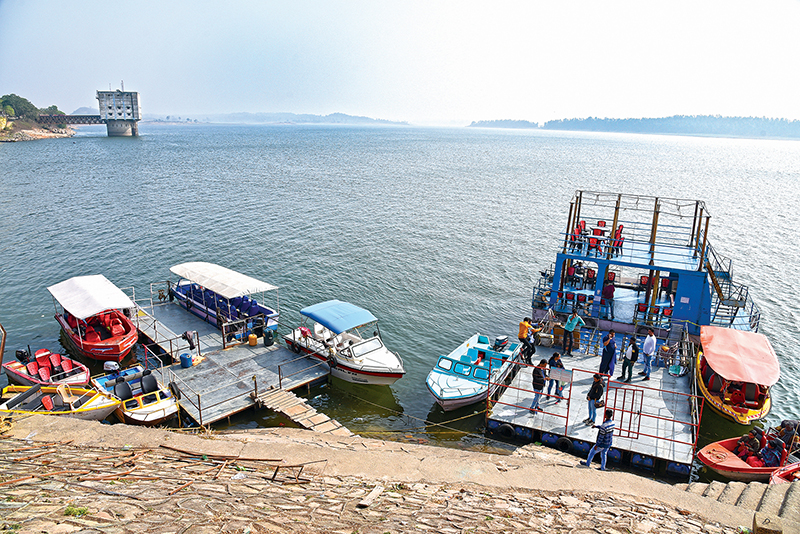
The boating jetty at Tilaiya Dam
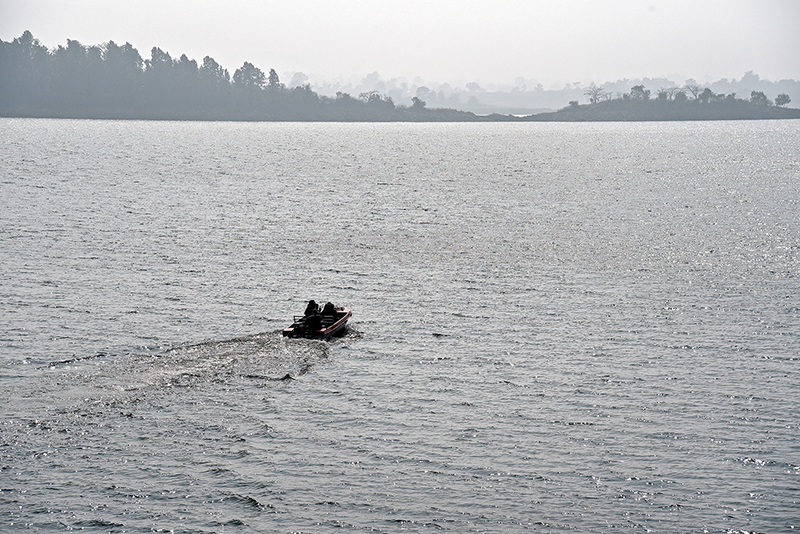
The resplendent reservoir at Tilaiya
Route
Beautiful weather, an energetic team, a swanky sedan – the perfect combination for a long drive! Team WHEELS hit the road at around 8 am, heading for Vidyasagar Setu where the trip meter was set to zero. We then entered the Kona Expressway followed by NH-19 (NH-2).
After a halt for breakfast at our regular eatery by the highway, we continued to drive on through Bardhaman followed by Durgapur and Asansol. Thereafter, we continued on the NH-19 (NH-2) over Nirsa, Govindpur, Dhanbad, Topchanchi till Bagodar. From Bagodar, we took the left turn and began driving along NH-100 towards Hazaribagh – 52 km away.
The topography changes hereon. The entire stretch from Bagodar to Hazaribagh is thick with forests. The drive amidst hilly terrain and the tall trees (mostly sal) in their orange-yellow hues at this time of the year on either side of the soft undulating road makes for a picture postcard view.
By about 4 in the evening, about 26 km from Bagodar, a series of large, brightly lit sweet shops lining both sides of the road caught our attention. We learnt that the place is called Tantijhariya – a modest version of Shaktigarh. Our stomachs growled seeing the piping hot pakoras and gulabjamuns fried in pure ghee and Jharkhand-style rabri. We hogged to our heart’s content and then hit the road again on NH-100. Enroute we crossed small villages such as Jabra and Jhoomra. We were still about 26 km from our destination. As it grew darker, we spotted two nilgais running away into the bushes, scared by the car light beams.
We proceeded straight till we reached Korrah Chowk at Hazaribagh from where we took the right fork and continued for another 400 m, passing the Gandhi Maidan. By about 7 pm, we reached Hotel Srivinayak, our lodging at Hazaribagh. As we stepped out of the car, we felt the severe wintry chill and high wind velocity whip about around us.
 – drivers delight.jpg)
The newly constructed NH-20 (NH-33) – drivers delight
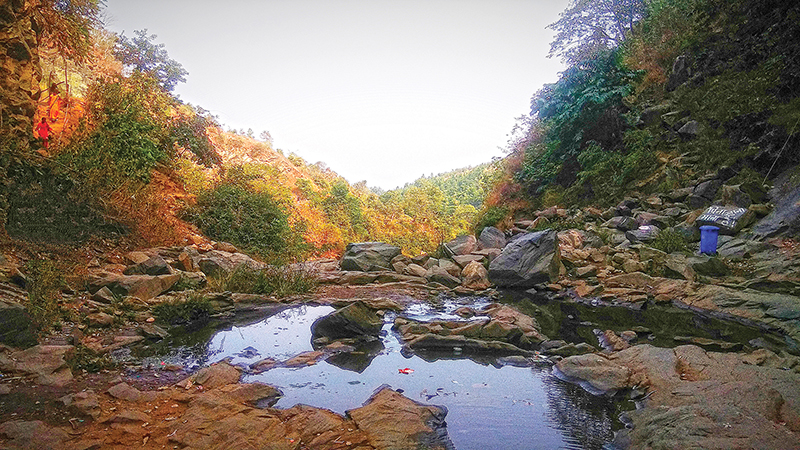
The enchanting Hazaribagh Jheel
Hazaribagh
Hazaribagh Town with its vast expanse of greenery is simply beautiful. We spent the evening connecting with old friends over dinner where we relished some local flavours and the warm hospitality of our hosts.
Waking up to a sunbathed morning in the cold of the winter felt great. Quickly we grabbed an energizing bite and left for Tilaiya Dam, about 56 km from Hazaribagh Town.
Route to Tilaiya: To reach Tilaiya, take the NH-20 (NH-33). The dam is nearly 56 km from Hazaribagh via Barhi. The newly constructed highway, NH-20 (NH-33) is one of the most beautiful highways we’ve driven on. From Barhi, we proceeded forward for a few kilometres and then went up a Ghat section passing the cosily nestled Sainik School to reach Tilaiya Dam.
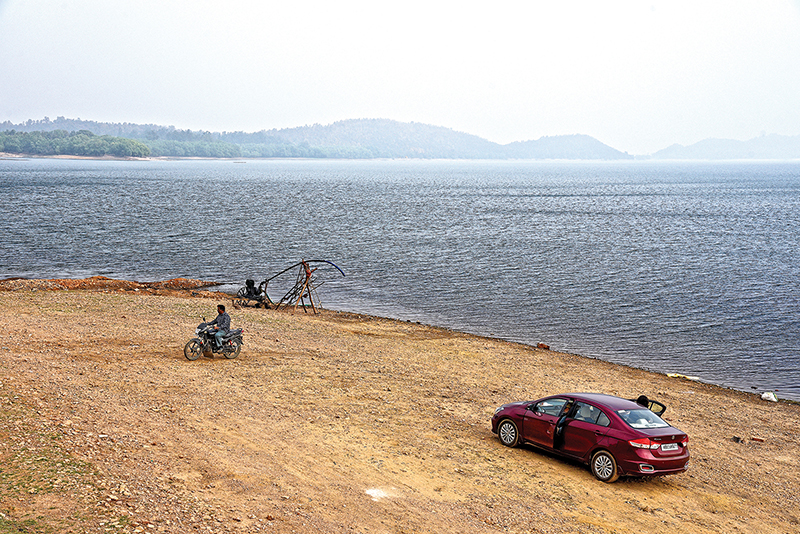
The tranquil banks of the reservoir at Tilaiya makes for an ideal picnic spot
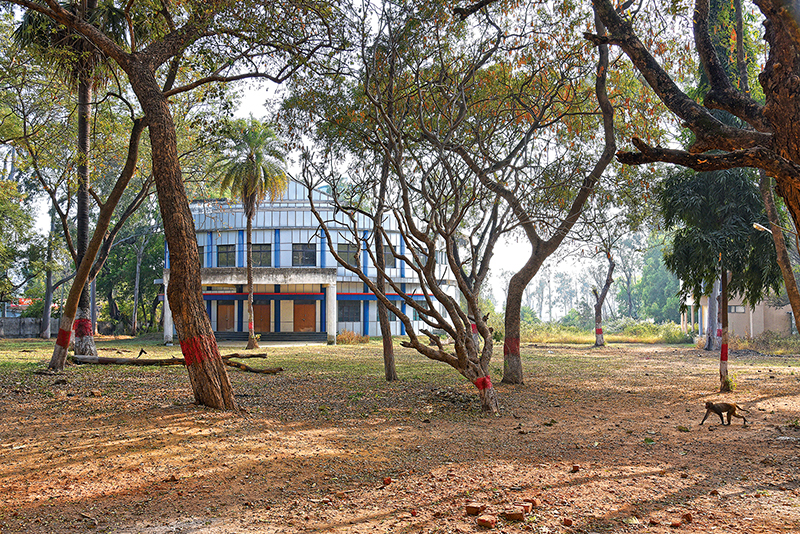
The Urwan Tourist Complex on way to Tiliaya
Tilaiya Dam
Inaugurated in 1953, the Tilaiya Dam was the first of the four multi-purpose dams of the Damodar Valley Corporation. It is constructed in the upper reaches of the Barakar River, at Tilaiya in Koderma district of Jharkhand.
We spent a while at the dam, watching the spectacular view of the reservoir. Climbing down a few steep steps on the bank, we reached the ticket counter for boating. The boats here are 5-10-seater motor boats. There is a large double decker boat that can comfortably accommodate 40 heads. A 15 min motorboat ride wasn’t enough to quench our thirsty souls.
Coming back from the dam, we took a break at one of the jhinga (prawn) line restaurants on the highway and gorged on some of the local prawn and other fried fishes.
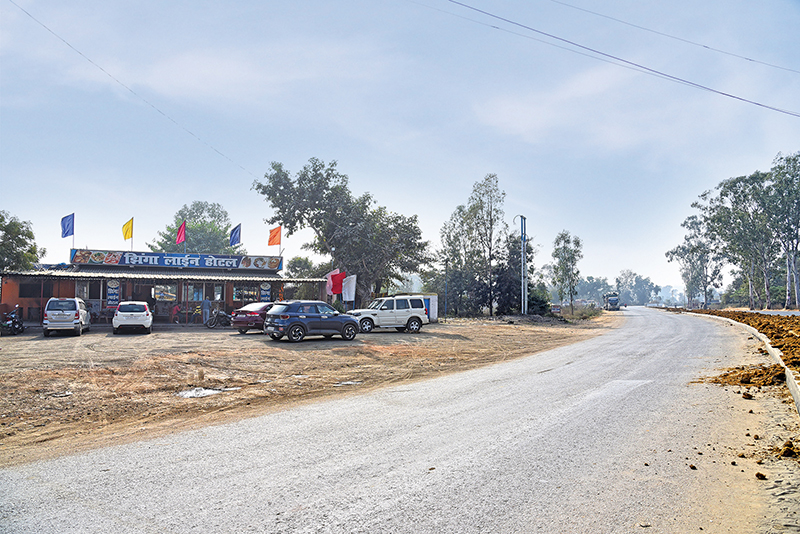
The inviting Jhiga Line restaurant on the highway
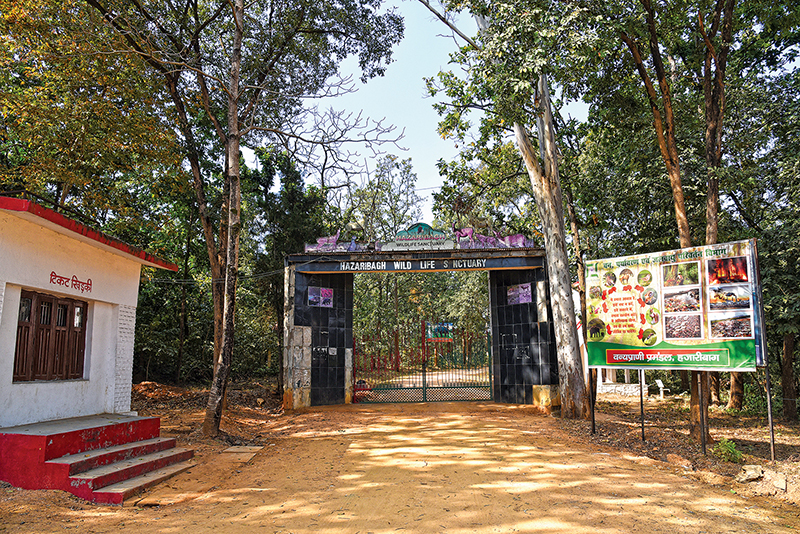
Entrance of Hazaribagh National Park
Urwan Tourist Complex
Enroute we took a lunch break at the Urwan Tourist Complex of the Jharkhand Government, which is located on NH-20 (NH-33). The Jhil Restaurant at the complex is by far the best eating house available for anyone travelling to Tilaiya. You get freshly prepared food cooked in ethnic Jharkhandi style but it takes time for the preparation.
In case you wish to book for an accommodation close to Tilaiya Dam, this place is ideal. There are 8 AC rooms with attached balconies overlooking the reservoir. The complex amidst woody surroundings proves to be a wonderful discovery. Though the service is a bit slow the view more than makes up. You also have a huge parking area and enough space to accommodate your drivers.
After a sumptuous lunch with rice, dal, green salad, aloo bhaja, mix veg, fish and chicken curry at the Jhil Restaurant, we drove for about a kilometre to reach a spot from where we rolled down a steep track to reach a point very close to the waters. Parking our car, we gradually made our way towards the forested area. We were quickly bathed in the silence. This is an ideal picnic spot. You could pack a food basket and spend hours together marvelling at the beautiful naturescape. From here, we retraced our way up the track and headed for the Hazaribagh Jheel inside Hazaribagh Town – a mere 2 km from our hotel.
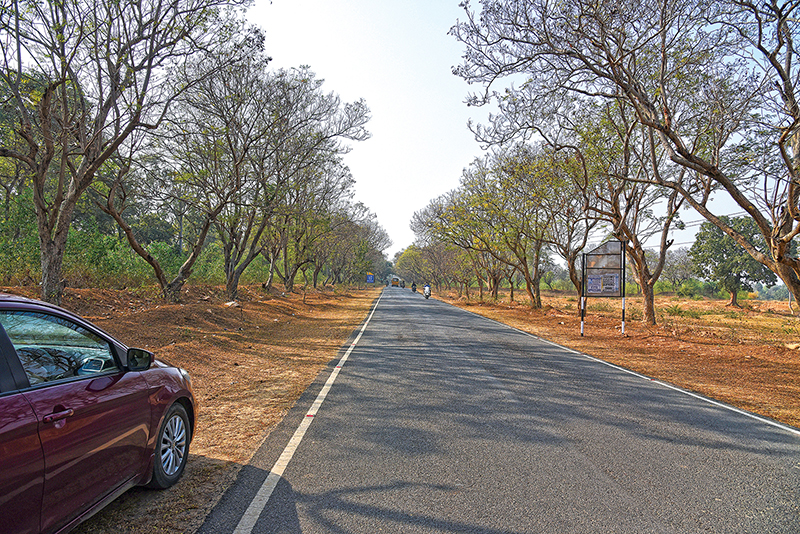
A typical winter-scape of Hazaribagh???????
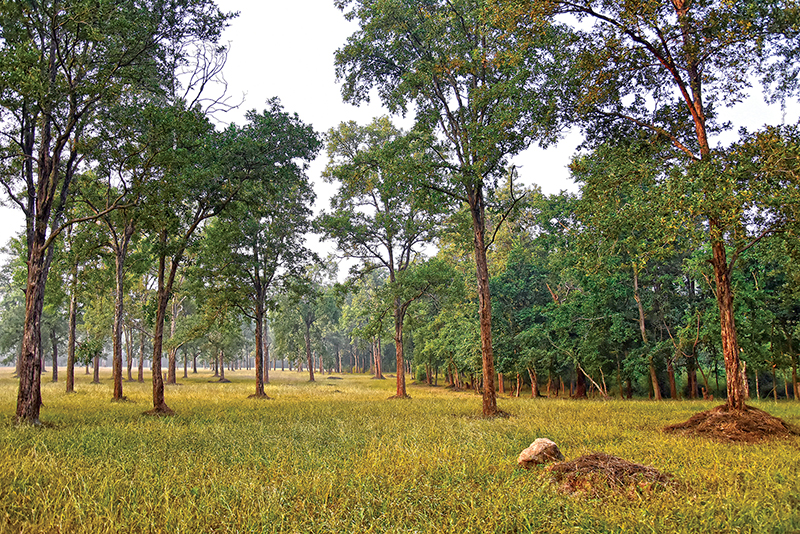
he lush green Hazaribagh National Park
Hazaribagh Jheel
Hazaribagh Jheel is a series of four artificial lakes, each set on a different level. This causes the water from one to spill over to the next lake through a spill channel. It is an engineering marvel which conserves water and supplies for people living in Hazaribagh.
Unfortunately, the entry to the Jheel is not too appealing. However, once in, it is a beautiful place and you can while away your time sitting on the benches and enjoying the splendour of the lakes. You may even take leisurely walks along the narrow paved walkways between the lakes. Sitting by the Jheel, we spent the evening in blissful quietude before returning to our hotel.
After a satisfying dinner at the hotel, we called it a day. The next morning, after a hearty breakfast, we left for the famous Hazaribagh National Park following NH-20 (NH-33). We traversed the same route as Tilaiya Dam. The National Park is located only 19 km away from Hazaribagh Town.
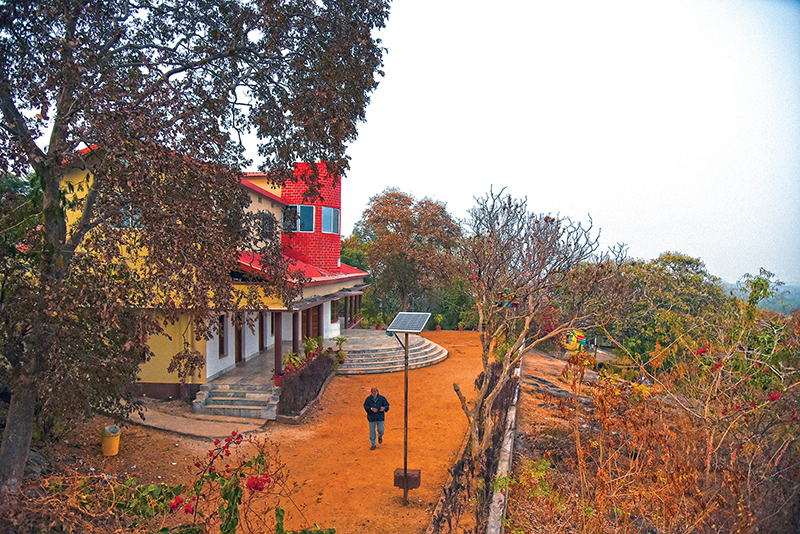
Canary Hill Forest Rest House
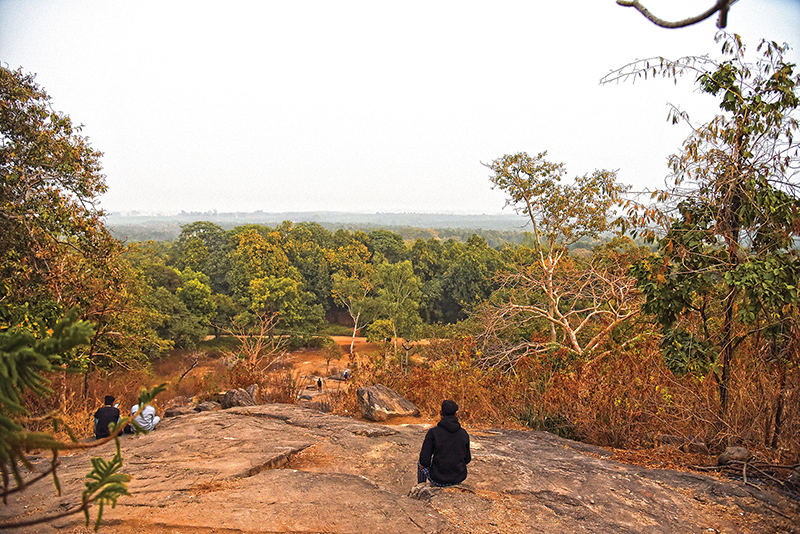
Canary Hilltop provides a mesmerising view of Hazaribagh Town
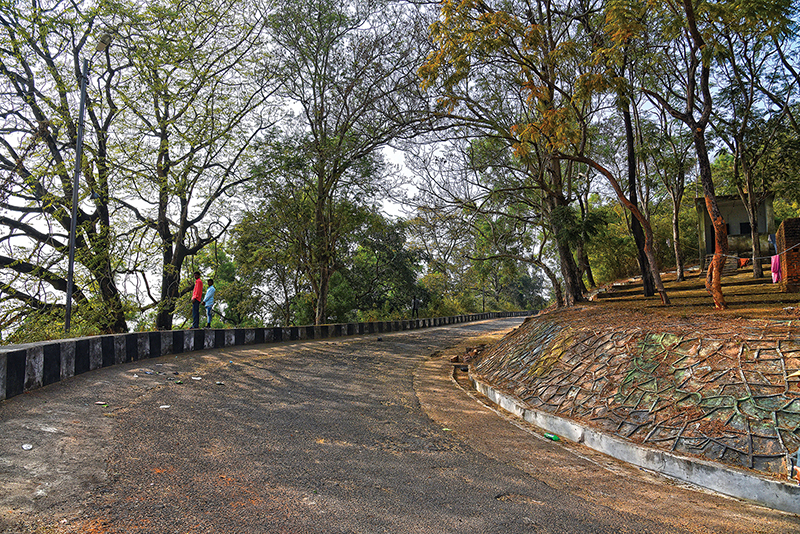
Driving uphill to the Canary Hill
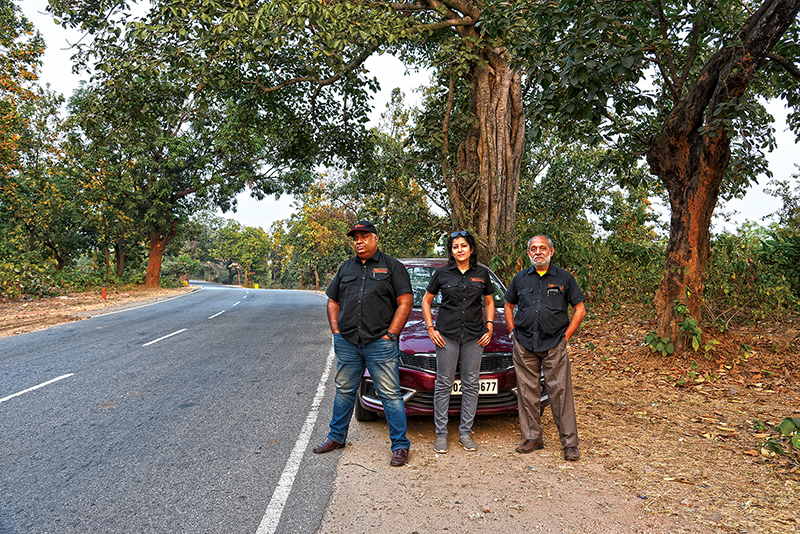
Team WHEELS on NH-100
Hazaribagh National Park
Nestled in low hilly terrain, at an average altitude of 615 m, Hazaribagh National Park has an abundance of wild animals and birds. The undulating lands of the park feature verdant meadows, dense tropical forest and abundant greenery. The cool pleasant environment showcases a mesmerising view. If one seeks interaction with nature far away from city life, Hazaribagh National Park is the place to be.
The national park houses a number of animal species like the sambhar, nilgai, chital, sloth bear and wild boar. Reptiles such as python and cobra and birds such as the hoopoe, peacock, kingfisher, wild myna, and golden ariel are common.
There are many streams and lakes inside the sanctuary that act as water holes for the animals here. Given its beauty and diverse fauna, Hazaribagh National Park serves as the perfect spot for family holidays.
We spent a couple of hours strolling around the park, drinking in the wilderness and enjoying the musical tweets of the birds. We were hungry by now but had to almost drag our feet out of this enchanting land. Post lunch, we left for Canary Hill.
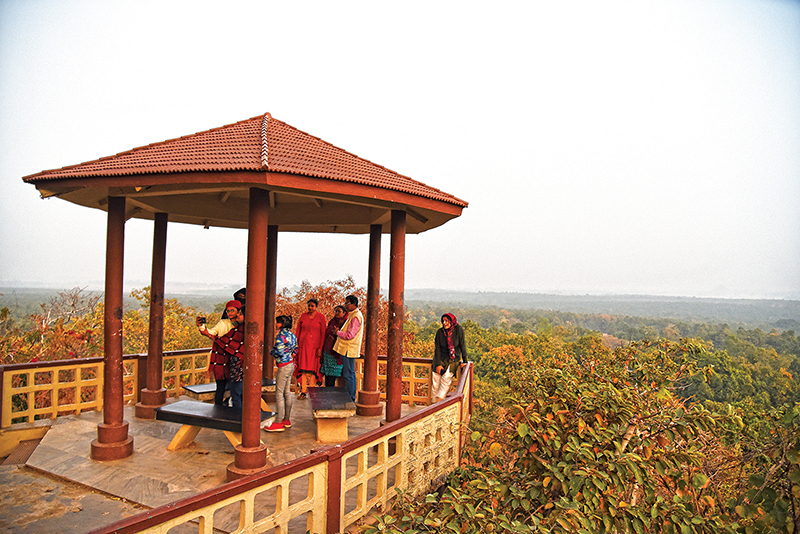
The view of Hazaribagh Town from the watchtower at Canary Hilltop
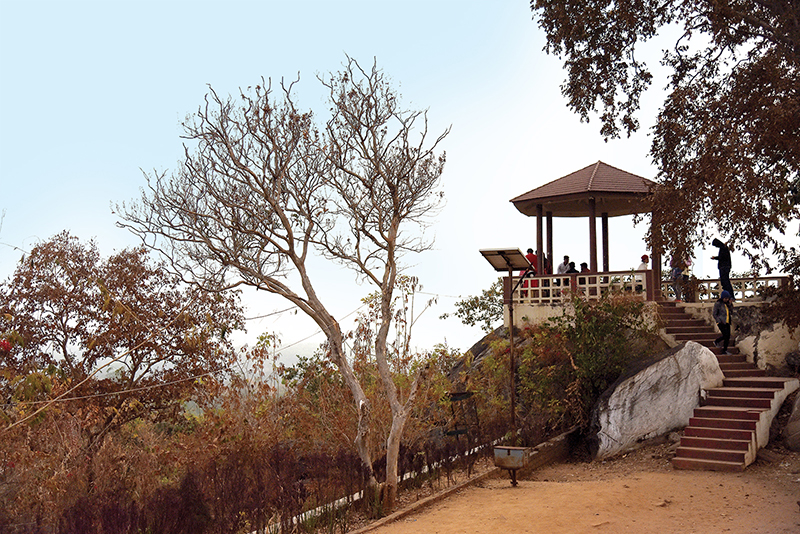 The watchtower at Canary Hilltop
The watchtower at Canary Hilltop
Canary Hill
A beautiful hill located 6 km away from Hazaribagh Town, Canary Hill with altitude of 2019 ft, provides a veritable feast for the eyes with its dazzling view of the green town. It is the best place to watch the sunrise and sunset from the city. We drove up to the hilltop just in time to be able to watch the sunset from the watchtower. It is said that the santhal tribe, who once inhabited Canary Hill, named it ‘kanhari’ which in Santhali means ‘an arrow-head’. Later the name was changed to ‘Canary.’
After witnessing an amazing sunset from the Canary Hilltop, we came downhill to indulge in sundowning. Sampling pan Indian starters and pouncing over local delicacies for dinner, we gleefully retired to bed.
Accommodation
Situated in the heart of Hazaribagh Town is the plush Sri Vinayak Hotel. This sprawling property reflects contemporary design. From rooms to suites, from restaurants to banquets, the hotel emanates class. They offer a lip smacking spread from their multicuisine restaurant.
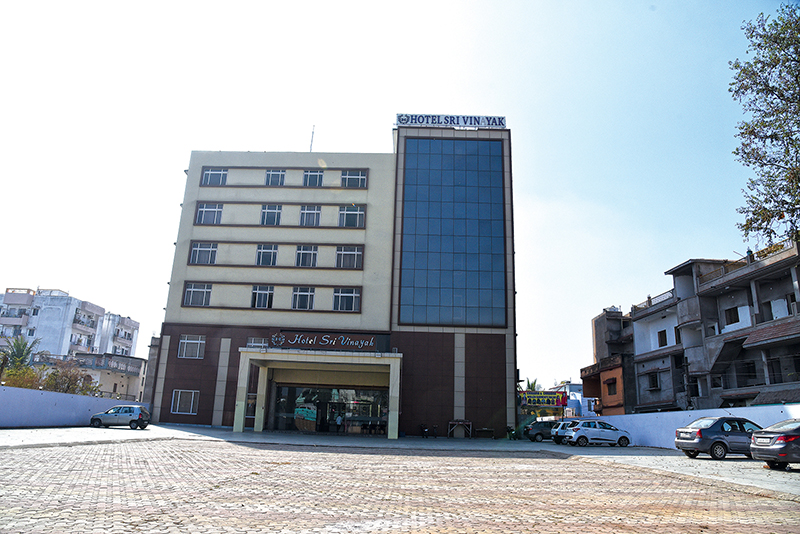
Hotel Sri Vinayak – Hazaribagh

A cosy guestroom – Hotel Sri Vinayak, Hazaribagh
Highway Traffic Mismanagement
All too soon the time came to bid adios to our wonderful winter trip in the wildnerness. After a sumptuous breakfast we left for Kolkata. Our joy knew no bounds when we found fresh sugarcane juice on NH-100 connecting Bagodar. Each of us had 2-3 glasses of the divine drink.
The drive back to Kolkata by the NH-19 (NH-2) went off pretty smooth till 7 pm. As we approached Dankuni, about 20 km away from the toll plaza, we faced a tremendous congestion due to the 'no entry for heavy vehicles' in Kolkata on account of Urs, a Muslim festival. The Chief called up the Police authorities frantically to find out the cause and a way out. We remained stuck for nearly two and a half hours. Eventually, we had to go over the median to the opposite flank like many other private cars, risking our lives moving in the wrong direction, else we would’ve remained stuck till 6 am next morning when the 'no entry' was due to be relaxed.
As we drove along the run-off area on the extreme left edge of the north-bound flank, we saw several private cars stuck between the trucks – completely locked. These heavy vehicles were made to stop on the middle and rightmost lanes without caring to leave a lane for the private vehicles. This mindless parking on the highway remained unmonitored by the police authorities, causing literal mayhem. Car owners proved the unwitting victims of the situation. Many cars had small children, patients and senior citizens, all of whom were held up in the traffic gridlock overnight.
Barring the last stretch, the rest of our trip was delightful. With promises to venture out to another interesting destination in the upcoming month, we dispersed.

Standard : A